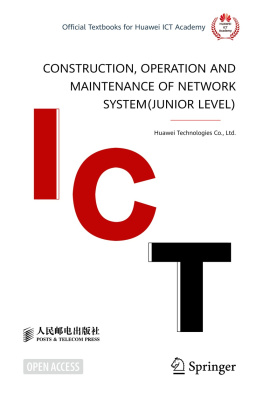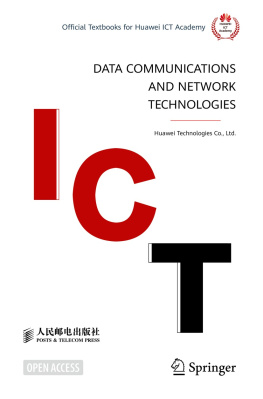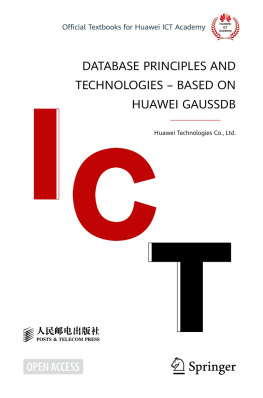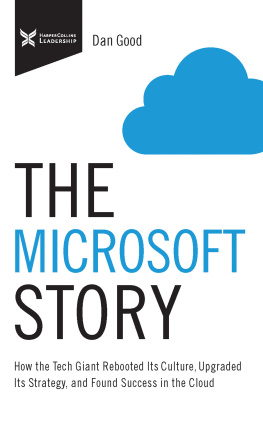Copyright 2017 by McGraw-Hill Education. All rights reserved. Except as permitted under the United States Copyright Act of 1976, no part of this publication may be reproduced or distributed in any form or by any means, or stored in a database or retrieval system, without the prior written permission of the publisher.
ISBN: 978-1-25-964306-4
MHID: 1-25-964306-9.
The material in this eBook also appears in the print version of this title: ISBN: 978-1-25-964305-7, MHID: 1-25-964305-0.
B&R Book Program
eBook conversion by codeMantra
Version 1.0
All trademarks are trademarks of their respective owners. Rather than put a trademark symbol after every occurrence of a trademarked name, we use names in an editorial fashion only, and to the benefit of the trademark owner, with no intention of infringement of the trademark. Where such designations appear in this book, they have been printed with initial caps.
McGraw-Hill Education eBooks are available at special quantity discounts to use as premiums and sales promotions or for use in corporate training programs. To contact a representative, please visit the Contact Us page at www.mhprofessional.com.
TERMS OF USE
This is a copyrighted work and McGraw-Hill Education and its licensors reserve all rights in and to the work. Use of this work is subject to these terms. Except as permitted under the Copyright Act of 1976 and the right to store and retrieve one copy of the work, you may not decompile, disassemble, reverse engineer, reproduce, modify, create derivative works based upon, transmit, distribute, disseminate, sell, publish or sublicense the work or any part of it without McGraw-Hill Educations prior consent. You may use the work for your own noncommercial and personal use; any other use of the work is strictly prohibited. Your right to use the work may be terminated if you fail to comply with these terms.
THE WORK IS PROVIDED AS IS. McGRAW-HILL EDUCATION AND ITS LICENSORS MAKE NO GUARANTEES OR WARRANTIES AS TO THE ACCURACY, ADEQUACY OR COMPLETENESS OF OR RESULTS TO BE OBTAINED FROM USING THE WORK, INCLUDING ANY INFORMATION THAT CAN BE ACCESSED THROUGH THE WORK VIA HYPERLINK OR OTHERWISE, AND EXPRESSLY DISCLAIM ANY WARRANTY, EXPRESS OR IMPLIED, INCLUDING BUT NOT LIMITED TO IMPLIED WARRANTIES OF MERCHANTABILITY OR FITNESS FOR A PARTICULAR PURPOSE. McGraw-Hill Education and its licensors do not warrant or guarantee that the functions contained in the work will meet your requirements or that its operation will be uninterrupted or error free. Neither McGraw-Hill Education nor its licensors shall be liable to you or anyone else for any inaccuracy, error or omission, regardless of cause, in the work or for any damages resulting therefrom. McGraw-Hill Education has no responsibility for the content of any information accessed through the work. Under no circumstances shall McGraw-Hill Education and/or its licensors be liable for any indirect, incidental, special, punitive, consequential or similar damages that result from the use of or inability to use the work, even if any of them has been advised of the possibility of such damages. This limitation of liability shall apply to any claim or cause whatsoever whether such claim or cause arises in contract, tort or otherwise.
CONTENTS
PREFACE
THE SONG OF HUAWEI AND HUAWEIS SPIRIT
The CEO of Huawei, Ren Zhengfei (hereafter Ren), wrote a passionate poem about the company in 1995 that came to symbolize the companys spirit for the next two decades of high-speed growth. It talked about the dream of reinvigorating the Chinese nation, but it also talked about emulating the United States, Japan, and Germany. It dreamed of glory for generations of Chinese, but it also mentioned putting each foot down on solid ground. Meanwhile, China was to learn from American high-tech, Japanese management, and German attention to detail. The Song of Huawei encapsulated Ren Zhengfeis ambitions, ideals, and unbending determination but from a unique perspective.
Since the Opium Wars, generations of Chinese patriots have raised a similar call: serve your country by developing it. Rescue it from the ridicule of being the poor man of Asia. Awaken it. Nevertheless, for more than a century China has taken a circuitous path toward such development. Constant wars, internal strife, and external challenges have led it through detours and setbacks. Only in 1978 did a group of companies finally begin to stride out successfully into international markets, most notably Lenovo and Haier. In the telecom arena, Huawei became the symbol of Chinas high-tech.
Ren is generally acknowledged to be the most low-key of any entrepreneur who operates on a global scale. Any world-class businessman must be powerfully motivated to be successful, in addition to having his own way of handling affairs. What motivates Ren? Where does the sense of history that is expressed by his Song of Huawei come from, not to mention the sense of destiny? What has he relied on to break through and transcend the extreme limitations that this period of history in China imposed upon him, to the extent that he has indeed led Huawei onto the world stage of high-tech? What can other companies in the world and other corporate managers learn from this company and this man? These are the key issues that this book explores and seeks to explain.
From the time it was a small start-up, Huawei has regarded American companies as the model to emulate. By this, it has meant specifically such companies as IBM, Microsoft, Apple, and Cisco, global leaders in the core technologies of the information industry. These have been the companies that propelled the development of the Internetin that sense alone, they have made outstanding contributions to humankind. In addition, however, Huawei has regarded the innovative environment in the United States as critical, particularly the mechanisms by which innovations and an innovative spirit can be realized. In the United States, as long as a company or an individual has very good ideas, venture capitalists will consider trying to turn those ideas into reality. The situation in China in the 1980s was radically different. When Huawei was founded, an innovative environment and any mechanisms by which good ideas could be realized barely existed.
When Ren founded the company in 1987, he had both little capital and little background, or political backing. From almost every perspective, he lacked the innate qualities required to become a leader of a multinational company. In the short space of 20+ years, Huawei nevertheless led its forces into international telecom markets and beat out many superb opponents, including Lucent, Nortel, Alcatel, Nokia, Siemens, Ericsson, and Motorola. In doing this, Huawei established an admirable model for Chinese as well as world companies to follow. Its success has depended in part on the way Ren has led Huawei employees in having an indomitable will to succeed. As chronicled below, the company cultivated an unbending determination and will to fight, but also a spirit of constant innovation. Another key part of Huaweis success has involved its sustained study of Americas best managers and entrepreneurs. Having internalized all these things, to a degree Huawei has established itself as a role model for companies around the world.
In the age of global business, if enterprises want to survive, they must constantly innovate with respect to both management and technologies. Otherwise, they will simply lose out in international competition. The successful experience that Huawei has built up over the past 27 years has been won at a cost, which has included not just money but sometimes life itself. This experience now represents a valuable distillation of lessons that can be an asset not just for Chinese companies, but also for the rest of the world. As one who participated in and witnessed this process, I have watched Huawei develop from the inside. As a long-time employee, I also have deep-seated feelings for both Huawei and Ren. In the interests of making these lessons more apparent and broadly known, I decided to summarize Huaweis experience in this book.








